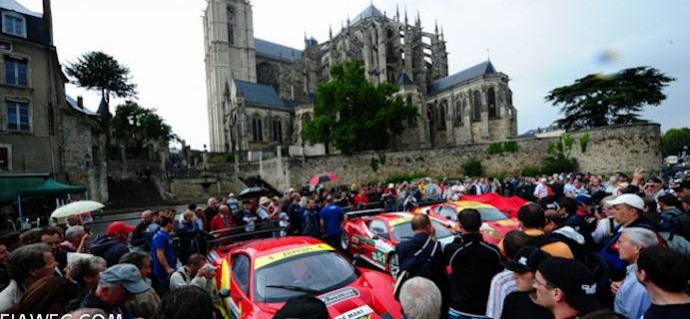
The city of Le Mans
Before each round of the FIA World Endurance Championship, an introduction will be published to the region hosting the event. After Sebring in Florida, and Spa-Francorchamps in the Belgian Ardennes, the Championship will visit the Sarthe region of France on the 16th and 17th of June. The city of Le Mans is best known worldwide for its circuit, yet even outside the realm of motor sports it is worth a detour. A city with a rich heritage awaits visitors to the region.
Built on a rocky outcrop, the city of Le Mans has been fortified since the Gallic era by a tribe called Aulerci Cenomani, from whom the city takes its name. The Romans invaded the city during the conquest of Gaul and raised a wall with geometric motifs. A portion of this enclosure, including a gate, towers and small entrances, is still standing, as well many half-timbered houses and Renaissance mansions.
The town was named Plantagenet City, after the famous dynasty. The palace of the Counts of Maine, that became the 'Hôtel de Ville' (town hall) in the French Revolution, was the birthplace of Henry II Plantagenet, future King of England. His father, Geoffrey, was nicknamed Plantagenet because he put broom flowers (genêt in French) in his hat while hunting. He married Matilda, daughter of the King of England, in the Cathedral of St. Julien that dominates the city centre, the forecourt of which was where the scene of the “tirade des nez” (tirade of the nose), by Gerard Depardieu as Cyrano de Bergerac, was filmed. The cathedral overlooks the famous Place des Jacobins which has hosted scrutineering for the 24 Hours of Le Mans in recent years.
With global notoriety thanks to its legendary race, the city of Le Mans could be also described as the cradle of the automobile: In 1873 Amédée Bollée, constructed “L'Obéissante” (the obedient), the first passenger carrying steam vehicle. It made its first trip from Le Mans to Paris in 1875 in 18 hours! His son Amédée manufactured the first petrol powered car. They invented technologies that are still used today. Their workshop was reconstructed in the Musée des 24 Heures Automobile Museum, a visit not to be missed during the week of the 24 hours.
Dave Davies
Photo: LE MANS (SARTHE, FRANCE), 24 HOURS OF LE MANS, SUNDAY 5TH JUNE 2011, SCRUTINEERING.


